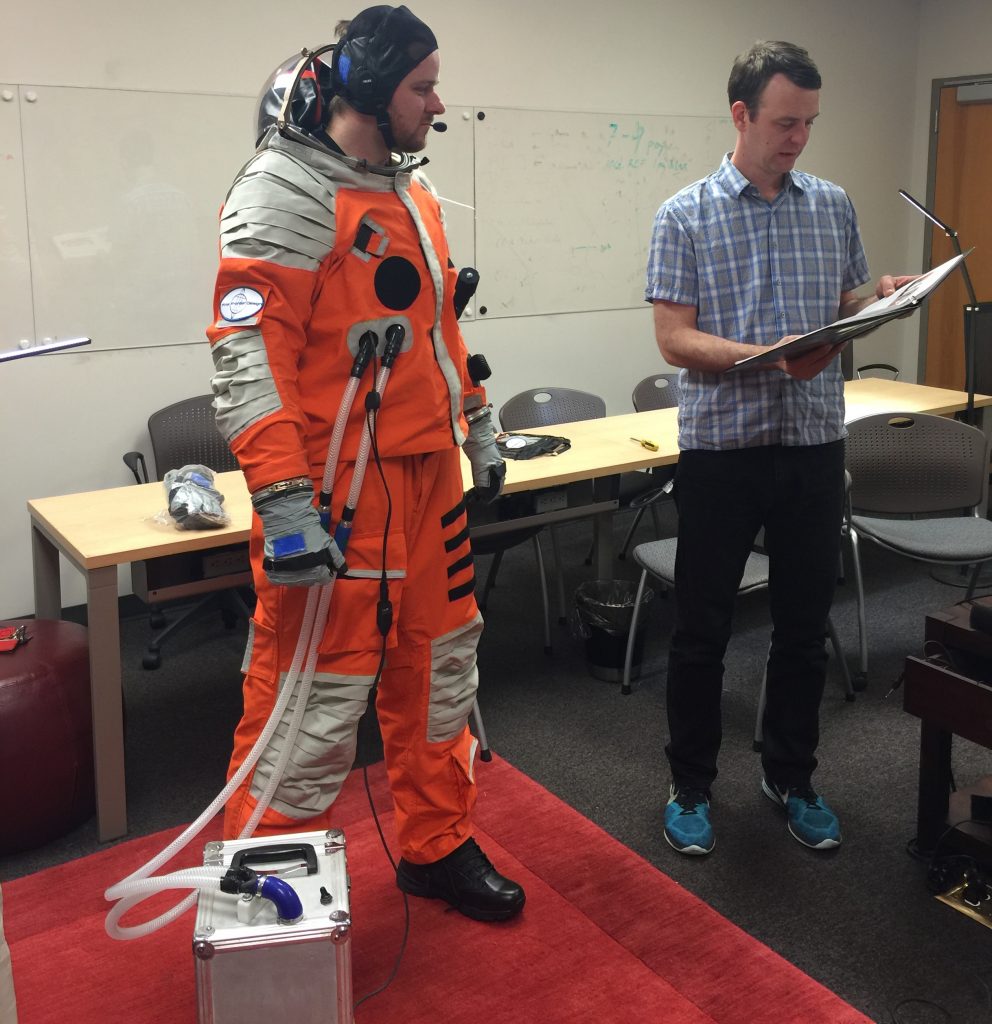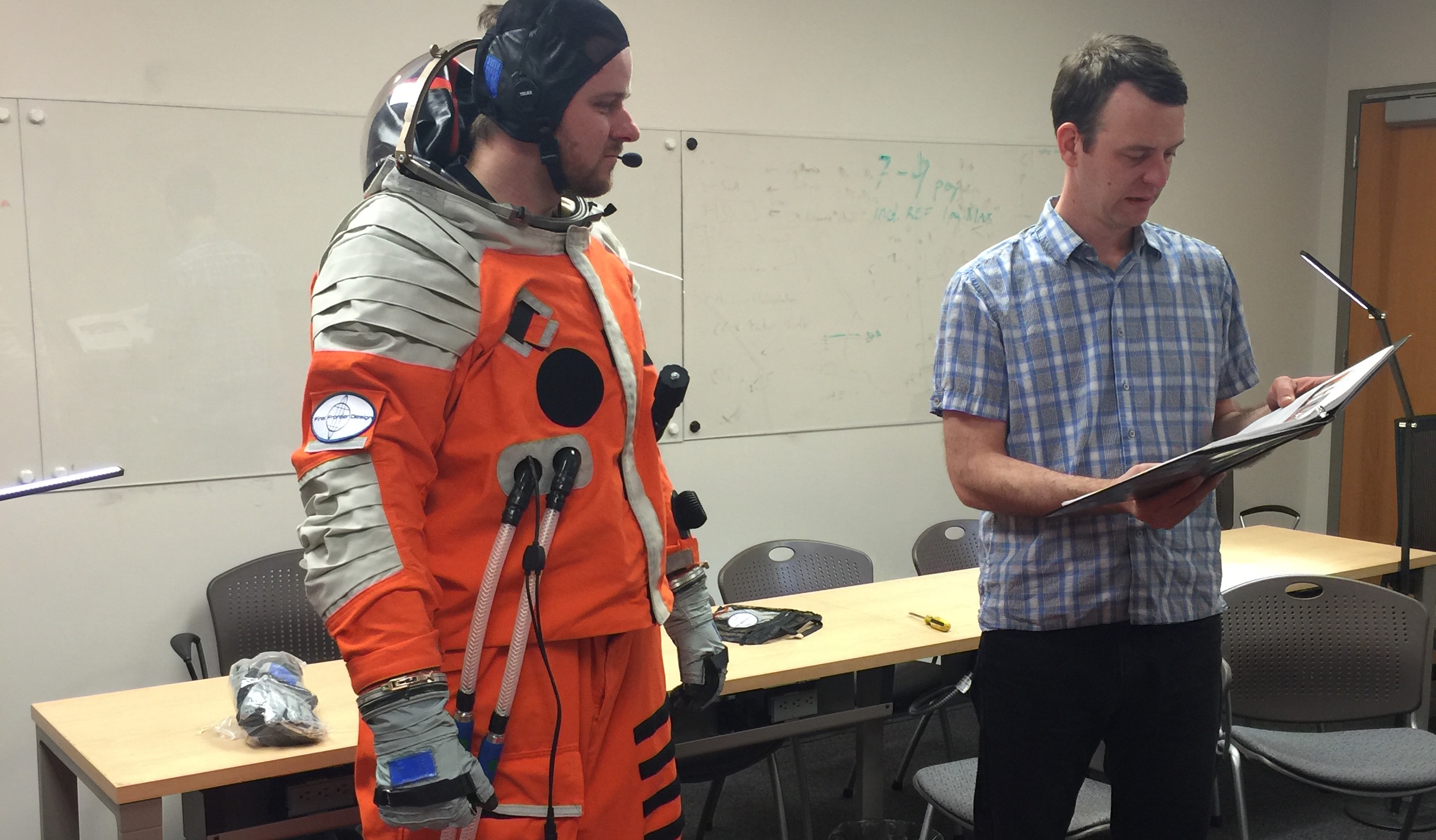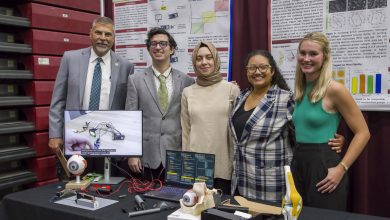What Will You Wear in Space?

Florida Tech Researchers Consider What the First Space Tourists Will Wear in Zero G
When space tourism finally gets off the ground, research from Florida Institute of Technology will likely be on board in several critical ways. From the space suit you wear to the design of flight deck to the rules for safety, Florida Tech’s School of Human-Centered Design, Innovation & Art, known as HCDi, is working to make safety, efficiency and comfort integral to the space flight experience.
As a part of their research efforts, HCDi recently acquired a functional spacesuit from Final Frontier Design of Brooklyn, N.Y., for use in developing a universal cockpit specifically for space tourism. Florida Tech is one of just three universities nationwide to have a spacesuit of this type.
To test the functionality of the simulated spacecraft environment, Ondrej Doule, an assistant professor at HCDi, needs to know what the pilots and passengers will be wearing when they blast off and later make the journey back to Earth.
“The suit provides pilots and spaceflight participants with another level of safety and we believe it may as common in future space tourism as gloves and helmets are for motorcycle road trips,” Doule said. “The human body, and human activities in space, has to be understood in much higher detail than in any other environment. What we learn in space about artificially built environments, can be then applied on earth for enhancement of sustainable development.”
Furthermore, he added, researchers must have a deep understanding of what it’s like to wear a space suit before they begin to improve spaceship flight deck and cabin design.
“For any area of spaceship flight deck research, design or engineering, the understanding of one’s dexterity, perception and work constraints imposed by a suit are extremely important,” he said.
The garment Doule will be working with is called an intra-vehicular activity, or IVA, suit, and it would be worn inside the vehicle during mission-critical events such as launch, reentry and landing. The IVA suit provides a contained, head-to-toe pressurized environment that protects the body from any loss of cabin pressure. Unlike spacesuits used by NASA astronauts, Florida Tech’s new suit is more utilitarian than bespoke. The suit is made using advanced techniques and is much lighter than usual suits. It is also adjustable and can be worn more than once and by more than one person.
Doule and research subjects will wear the suit while performing tests on the multidirectional-motion cockpit simulator he is designing to ensure the user experience is as realistic as possible. He agreed to collaborate with Final Frontier Design on the suit’s technology as well as external technology including wearables and displays.
“For us, it’s still a learning process, and Florida Tech’s research plays an important role,” said Ted Southern, Final Frontier Design’s president and designer.
Final Frontier Design got its start in space gear in 2009 when Southern won a contest to design a glove for NASA. Southern and Final Frontier Design co-founder Nik Moissev (who created the IVA suits) have since received NASA grants to make not only the IVA gear, but also components for extravehicular activity suits, which protect a person in space. Southern, Moiseev and the rest of the team hope their protective garments will be used for a variety of actual commercial, manned space flights.
Among the IVA suit’s notable aspects:
- Using interior straps, the suit can be enlarged or reduced in size depending on the size of the wearer.
- It’s designed to take less time to put on and take off than existing spacesuits.
- Many plastic and metal parts are made on a 3-D printer, such as the helmet ring, regulator and interface ports. This innovation reduces the cost of the suit.
- A lightweight, integrated ventilation system.
- A lighter overall weight than traditional IVA suits.
%CODE1HCDWHITEPAPER%





